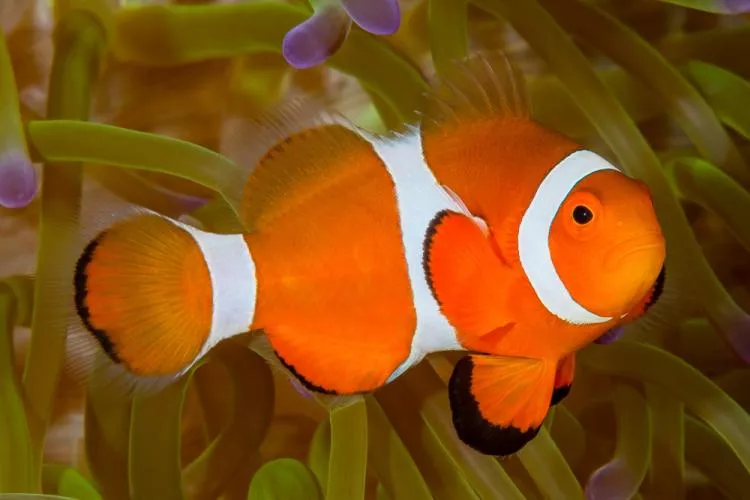Can clownfish count?
To discern friend from foe, clownfish count stripes. A recent study found that common clownfish displayed aggressive behaviour predominantly towards members of their own species with three white bands, engaging in confrontations lasting several seconds. In contrast, intruders of other species faced milder aggression.
Clownfish, also known as anemonefish, are feisty critters that vigorously defend their anemone homes from intruders, particularly those of their own species, displaying aggressive behaviour. Anemonefish species living in the same areas exhibit a variety of stripe patterns, ranging from three vertical bars to none, as observed by Kina Hayashi from the Okinawa Institute of Science and Technology, Japan.
Hayashi and colleagues published their groundbreaking discovery in the Journal of Experimental Biology, revealing that common clownfish (Amphiprion ocellaris) possess the ability to count. They conducted experiments, raising young common clownfish from eggs in isolation to ensure they had no exposure to other anemonefish species. The researchers then filmed the fish’s reactions to various anemonefish species, including intruders of their own species, to determine their response.
Stripe patterns
To understand how the clownfish distinguished between species, the researchers isolated small groups of young common clownfish and filmed their reactions to models with different stripe patterns. The results showed that the clownfish paid little attention to plain orange models or models with one stripe, but exhibited increased aggression towards models with three stripes, similar to their response to intruders in the previous experiment. Hayashi suggests that the aversion to fish with two stripes could be related to their developmental stage, as common clownfish initially develop two white stripes before gaining a third.
The study showed that the young common clownfish possess the ability to differentiate between species based on the number of white bars on their sides. This allows them to defend their anemone homes from individuals that may attempt to evict them, while showing less concern towards species that pose little threat to their abode.
























